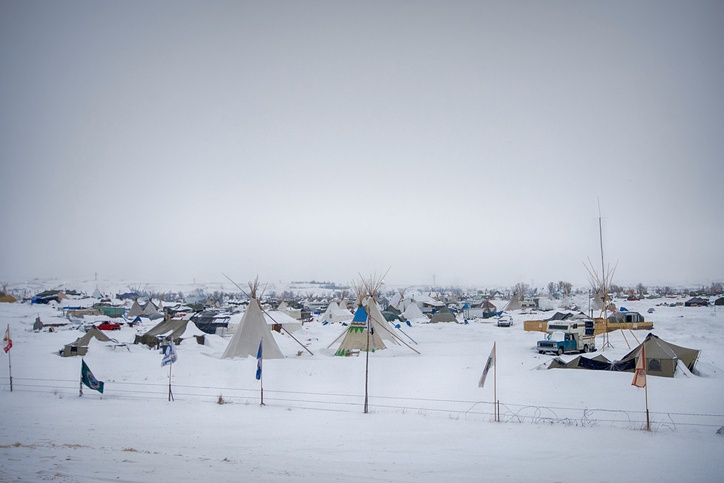A guest post by Joseph Bobrow, Roshi, Ph.D.
From April 2016 to February 2017, tens of thousands of people journeyed to Oceti Sakowin, Seven Fires Camp, in Cannonball, North Dakota in support of the water protectors on the Standing Rock Sioux reservation in a momentous gathering of tribes, their allies, and people from all walks of life and all ages, standing in solidarity to put a halt to the Dakota Access Pipeline (DAPL) and protect the water of 17 million living downstream. They won a major victory when the Army Corps of Engineers denied a key permit to the builders (Energy Transfer Partners) and insisted on a thorough Environmental Impact Study. Soon after Donald Trump took office in January, 2017, he ordered that construction resume without the study [1]. The pipeline sprung leaks even while being tested. Now, it is in full operation.
The impacts from the remarkable community of solidarity and action at Standing Rock did not end when camp was closed, the teepees and communal structures razed, and the holdouts arrested. Other protest camps are springing up around the country, including Camp White Pine in Pennsylvania, where residents are working to stop the Mariner East 2 pipeline, and in Louisiana where a multifaith alliance is organizing a camp to block the Bayou Bridge Pipeline. The ripples from Standing Rock was also felt on July 4, 2017, when tribes gather in Black Hills, SD for “Reclamation of Independence.”
To convey and keep alive the power and joy of Standing Rock, I want to share my experience as part of an action by 524 clergy on November 3, 2016. At Standing Rock multifaith spiritually-informed direct action was the interplay, in a remarkable contemporary context, of the principles of Native spirituality: The Great Mystery (Wakan Tanka, also Great Spirit) and All My Relations (Mitakuye Oyasin).
Read More












